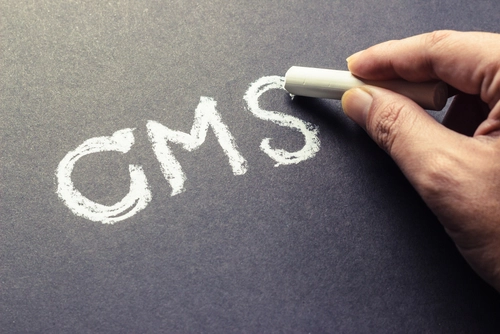Get the Lowdown on the 2-Midnight Rule

If patients receiving identical services are listed differently as inpatients or outpatients in different hospitals, the OIG is sure to take notice — and it did. The OIG has raised an alarm on this issue. That, plus compliance with the two-midnight rule are favorite audit areas of the Recovery Audit Contractors (RACs). Read on to learn how to tackle these issues.
The issue: In an OIG Report “Hospitals’ Use of Observation Stays and Short Inpatient Stays for Medicare Beneficiaries” (OEI-02-12-00040, July 2013), the OIG found that the reasons for short inpatient stays and for outpatient observation stays were often the same. They further noted that the relative use of short inpatient stays versus outpatient observation stays varied widely between hospitals. The inpatient reimbursement can be significantly higher than that for an observation, and this is what worries the payers.
Background: The two-midnight rule indicates that if the patient needs to be in the hospital longer than two midnights, then the inpatient admission is presumed to be proper. This rule serves as a benchmark to clarify treatment as an inpatient or outpatient in the hospital. CMS’ longstanding guidance has been that Medicare review contractors should also evaluate the physician’s expectation of time required for patient recovery, based on the information available to the admitting practitioner at the time of the inpatient admission. Therefore, clinicians need to be very clear about clinical decision making, and be able to demonstrate medical necessity underlying the physician’s admission order.
Here are some key aspects to bear in mind as you draw your strategy to safeguard your facility from RAC audits.
1. Know the Facts About Observation
According to the two-midnight rule, if the admitting physician believes that the patient’s condition will improve within two midnights, and that observation is merely what is required, the physician may order an observation stay for the patient. Then, if the physician later feels the need to admit the patient, he may do so as necessary. The time spent in observation also gets counted toward the two midnight benchmark, although it does not qualify in meeting the three-day inpatient admission for skilled nursing coverage.
That said, how do you count the number of hours in observation? It’s not just start time, stop time, and remaining services. You might have interrupted services. And what if you’re giving infusion therapy? Does it still count as observation hours when you’re administering infusion therapy?
“The patient could be out of the observation bed for extensive testing, but still be considered an observation patient,” explains Duane C. Abbey, PhD, president of Abbey and Abbey Consultants Inc., in Ames, IA. “This is where things get a little fuzzy. If the physician determines at the time of placement that the patient will need to remain over two midnights, then an inpatient admission is the choice, at least for Medicare.”
Facilities need to make that decision. If the patient actually leaves the observation bed and goes someplace else, then it is advisable to stop counting the hours. You may need to devise hospital policies and procedures regarding how to count the hours. “CMS has left the guidance in a state of ambiguity,” says Abbey. “Hospitals are on their own to devise policies and implement procedures.”
Billing for observation? A patient should be in observation a minimum of eight hours before you report it as such. And under the Medicare program, it is presumed that 48 hours is the maximum. Physicians need to be trained in this area and allowed to make some of these decisions because they’re the ones being held ultimately accountable.
2. Switch Patient Status with Condition Code 44
Condition Code 44 can be used to switch an inpatient admission to outpatient. The only caveat is that a Medicare patient must still be in the hospital. There may be times when private third party payers may want you to switch to observation. Like it or not, “reclassify that patient as observation to get paid something. Reclassify it and move on,” says Abbey.
Most third-party payers are looking at observation as a less expensive means of making sure that their covered beneficiaries receive care. That’s why such a situation can arise.
3. Manage to Have a Utilization Review 24/7
CMS requires and presumes a Utilization Review staff to be available 24/7 for helping physicians make proper decisions such as whether to admit the patient or treat him as an outpatient. This is very crucial, from the audit point of view, “… because hospitals should have case management and other staff available at all times to assist the physician in making the appropriate initial admission decision” (78 FR 50914). Many hospitals do not have the luxury of having Utilization Review available 24/7/365. However, Medicare believes that you do.
4. Remember Hospitals Are Solely Responsible
According to CMS, the onus for correct coding and billing lies “solely” with the hospital. “You’re it, guys,” says Abbey. “If anything goes wrong in the billing process, if you incorrectly bill for a service that either should or should not have been provided, then it’s your fault. CMS wants its money back, period.”
As the Federal Register states, “We also explained that hospitals are solely responsible for submitting claims for items and services provided to beneficiaries and determining whether submission of a Part A or Part B claim is appropriate” (78 FR 50928). This type of language appears repeatedly in this Federal Register.
5. Definitions Are the Key
Whenever you get into any of these areas be sure you look for definitions among other things. Though it sounds ridiculous to ask, “What is a hospital?” there are different kinds of hospitals under the Medicare program, defined as acute, long-term care, critical access, or inpatient psychiatric facility. They are treated differently particularly for payment purposes.




